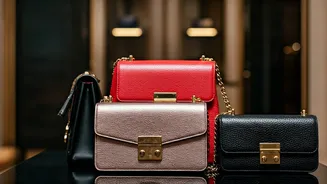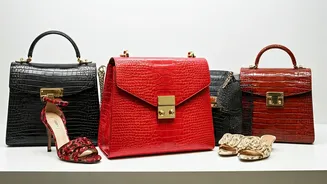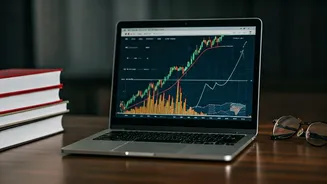Fashion's ROI
The fashion industry provides interesting information about return on investment (ROI). Analyzing the ROI in fashion involves examining various factors.
Fashion investments can be diverse, encompassing anything from designing, marketing, or manufacturing. These investments often involve significant capital, making it important for businesses to carefully assess potential returns. Some trends might show immediate gains, whereas others may build long-term value, affecting how ROI is calculated and interpreted. Investors and businesses utilize financial metrics to evaluate profitability, which helps them make informed decisions and manage risks within the volatile fashion market.
Market Trends Analysis
Market trends significantly impact the financial landscape of fashion. Analyzing the market trends is essential to understanding the movement of fashion, which includes the way consumer tastes change. Fast-fashion, luxury, and sustainable fashion are a few of the areas that are driving the fashion market now, but their financial performance differs significantly. Economic factors such as inflation, changes in consumer spending, and shifts in supply chains affect the fashion's financial stability. The growth or decline of sales, profit margins, and market share are closely tied to the dynamic changes in this market. To stay ahead, fashion brands invest in data analytics, which allows them to track patterns, forecast demand, and adapt business strategies to changing circumstances.
Financial Metrics
Several financial metrics are utilized to evaluate the fashion industry's performance. The revenue helps to indicate the total sales generated, offering an overview of brand popularity and market share. Profit margins are crucial, reflecting the brand's ability to maintain expenses, like the cost of materials and marketing. ROI gauges the effectiveness of investment, which measures the performance of different projects, and it's used to identify if the business's return justifies spending. Liquidity ratios are important to determine the capacity to manage short-term obligations and stay financially steady. Brands must analyze cash flow, monitoring funds entering and exiting the company. All of these financial indicators help fashion brands monitor performance, allocate resources, and make decisions about the future.
Impact of Branding
Branding greatly impacts the financial outcomes in the fashion sector. A well-recognized brand improves customer trust, and it also impacts sales. Building strong brand equity is about developing brand loyalty. This is something that directly translates into a premium for products. The strategy of a brand influences the price and market positioning. For example, luxury brands frequently have higher profit margins due to strong brands. Marketing techniques also affect the perception of the brand, impacting sales and revenue. Brands that consistently maintain high-quality, distinctive branding, and effective marketing enjoy financial success. This proves that investing in brand strategy and brand positioning is critical for long-term growth and competitiveness in the fashion sector.
Sustainable Fashion
Sustainability is becoming important in the fashion industry. Brands are looking at ways to incorporate sustainable practices to attract customers concerned about the environment. This shift includes the use of eco-friendly materials, ethical sourcing, and promoting circular fashion models. The financial implications are complex, requiring investment in new technologies, adjustments to manufacturing processes, and changes in supply chains. Though the initial costs might be higher, sustainable practices can lead to long-term gains. This includes improved brand reputation, increased customer loyalty, and opportunities to reach environmentally conscious markets. Sustainable practices and financial sustainability can work together, making a profitable and environmentally responsible business model in fashion.
Risk Management Strategies
Risk management plays a vital role in protecting financial stability and achieving long-term success in the fashion industry. The fashion industry faces several risks, including shifts in consumer trends, supply chain disruptions, and economic volatility. Brands develop strategies to mitigate risks. Diversifying supply chains minimizes vulnerability to disruptions, such as price fluctuations in materials or transportation delays. Monitoring market trends helps companies react to shifts in consumer demand, avoiding overstocking or stock shortages. Fashion companies use financial hedging tools to protect against exchange rate volatility. Creating a strong brand reputation and loyal customer base serves as a safety net during tough times. Proactive risk management is essential to navigate fashion's dynamic and competitive environment, protecting finances and promoting sustained growth.













